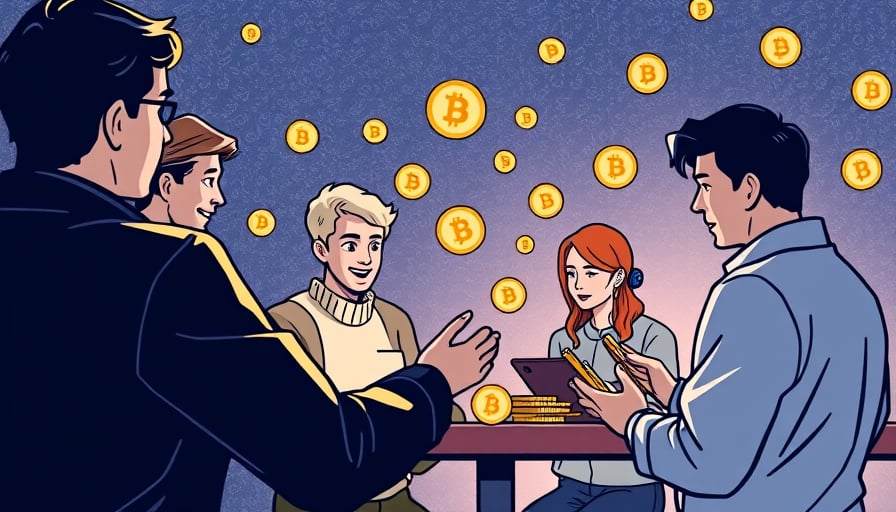The SwiftCash Paradox: A Cry of Survival Amidst a Crypto Renaissance
SwiftCash, a low‑market‑cap token hovering near $0.00082 as of 15 Oct 2025, has been largely invisible to the mainstream narratives that dominate the crypto press today. While Ripple’s aggressive acquisition of GTreasury and RippleX’s proactive “Attackathon” demonstrate a bold push toward institutional and treasury‑grade blockchain solutions, SwiftCash remains stranded in a market that prizes utility, early‑stage hype, and network effects. Its 52‑week high of $0.00101 and low of $0.00039 illustrate a token trapped between an indifferent market and a potential that has yet to be articulated.
Ripple’s Corporate Treasury Ambition and its Implications
The latest development—Ripple’s $1 billion purchase of GTreasury—signals a strategic pivot to embed blockchain infrastructure within traditional corporate treasury frameworks. GTreasury’s tools promise 24/7 access to digital assets, near‑instant cross‑border settlements, and yield‑generating mechanisms. Ripple’s CEO, Brad Garlinghouse, framed the move as a remedy to “slow, outdated payment systems.” Yet, the acquisition targets a niche market: large corporates with existing treasury operations. The benefits are clear for Ripple’s core product, but they do not translate into a direct catalyst for tokens like SwiftCash, whose ecosystem remains underdeveloped and disconnected from the enterprise infrastructure Ripple is now courting.
Moreover, Ripple’s third acquisition in 2025, following Hidden Roa, indicates a broader strategy of consolidation. The company is essentially absorbing complementary services to create a one‑stop‑shop for treasury management. This consolidation could marginalize smaller, community‑driven projects that lack the scale to compete with Ripple’s network effects and capital reserves. SwiftCash, without a clear value proposition tied to corporate treasury or a robust developer ecosystem, risks being overlooked in favor of larger, more integrated platforms.
Whale Momentum on the Rise: The Digitap Phenomenon
In stark contrast, the crypto press is buzzing with the ascent of Digitap ($TAP), touted by multiple analysts as a potential 10–100× play. Whales are funneling capital into Digitap at $0.0125, attracted by its fintech infrastructure, zero‑KYC policy, and a functional omni‑bank model that promises digital payments, savings, and future lending. The narrative is compelling: a token that bridges real‑world finance with the speed and decentralization of blockchain, backed by an application available on Google Play and the Apple App Store.
This hype cycle showcases a phenomenon that SwiftCash does not share: an identifiable use case, a clear product roadmap, and the backing of significant institutional interest. While Ripple’s acquisitions focus on infrastructure, Digitap’s promise lies in consumer adoption—a market segment that could catapult a small token from obscurity to mainstream relevance. SwiftCash’s current fundamentals—no listed partners, no active development team, and a stagnant price trajectory—render it a passive player in an environment that rewards aggressive, product‑first strategies.
RippleX’s “Attackathon” and the Quest for Security
RippleX’s decision to invite the security community to break the XRPL Lending Protocol before launch is a double‑edged sword. On one side, it demonstrates a proactive stance toward security, potentially earning trust from institutional actors. On the other, it highlights a gap in Ripple’s own product maturity: the need to rely on external bug‑bounty programs to secure critical codebases. The $200 k “Attackathon” underscores the complexity of XRPL’s 35 k lines of C++ code and the emerging XLS‑66 standard governing uncollateralized credit.
For SwiftCash, the ripple effect—pun intended—could be indirect. As Ripple consolidates its position in the corporate treasury and DeFi lending space, it sets higher standards for security and integration. Projects that cannot meet these standards risk being sidelined. SwiftCash’s current lack of a clear security roadmap or a robust governance structure further distances it from the institutional confidence Ripple is cultivating.
Market Reality: SwiftCash’s Position and Prospects
- Price Dynamics: With a close price of $0.000819166 and a 52‑week swing from $0.000389 to $0.001009, SwiftCash has demonstrated extreme volatility but no clear upward trend. This price action reflects a lack of sustained demand and weak market perception.
- Volume and Liquidity: There is no mention of significant trading volume or liquidity events in the news. Without large buyers, price discovery remains fragile.
- Development Activity: The available data shows no active development announcements, community engagement, or product releases. Tokens that thrive typically maintain an active GitHub presence, community forums, and regular updates.
- Strategic Fit: Ripple’s corporate focus on treasury and institutional DeFi may create opportunities for interoperability, but SwiftCash would need to demonstrate a direct value proposition—such as a treasury management tool, a yield‑generation protocol, or a bridge to corporate assets—to align with Ripple’s ecosystem.
Conclusion: A Call for Strategic Reorientation
SwiftCash stands at a crossroads. The crypto landscape is moving towards large‑scale infrastructure, institutional trust, and real‑world utility. Without a clear strategy to capitalize on these trends—be it through partnerships, product innovation, or a security roadmap—SwiftCash risks becoming a statistical anomaly rather than a market participant. Stakeholders must decide whether to invest in an ambitious overhaul that aligns with the corporate treasury direction embodied by Ripple’s recent acquisitions, or to accept the token’s marginal position in a rapidly evolving ecosystem. The choice is stark: adapt or fade into the background of a market that no longer tolerates complacency.
